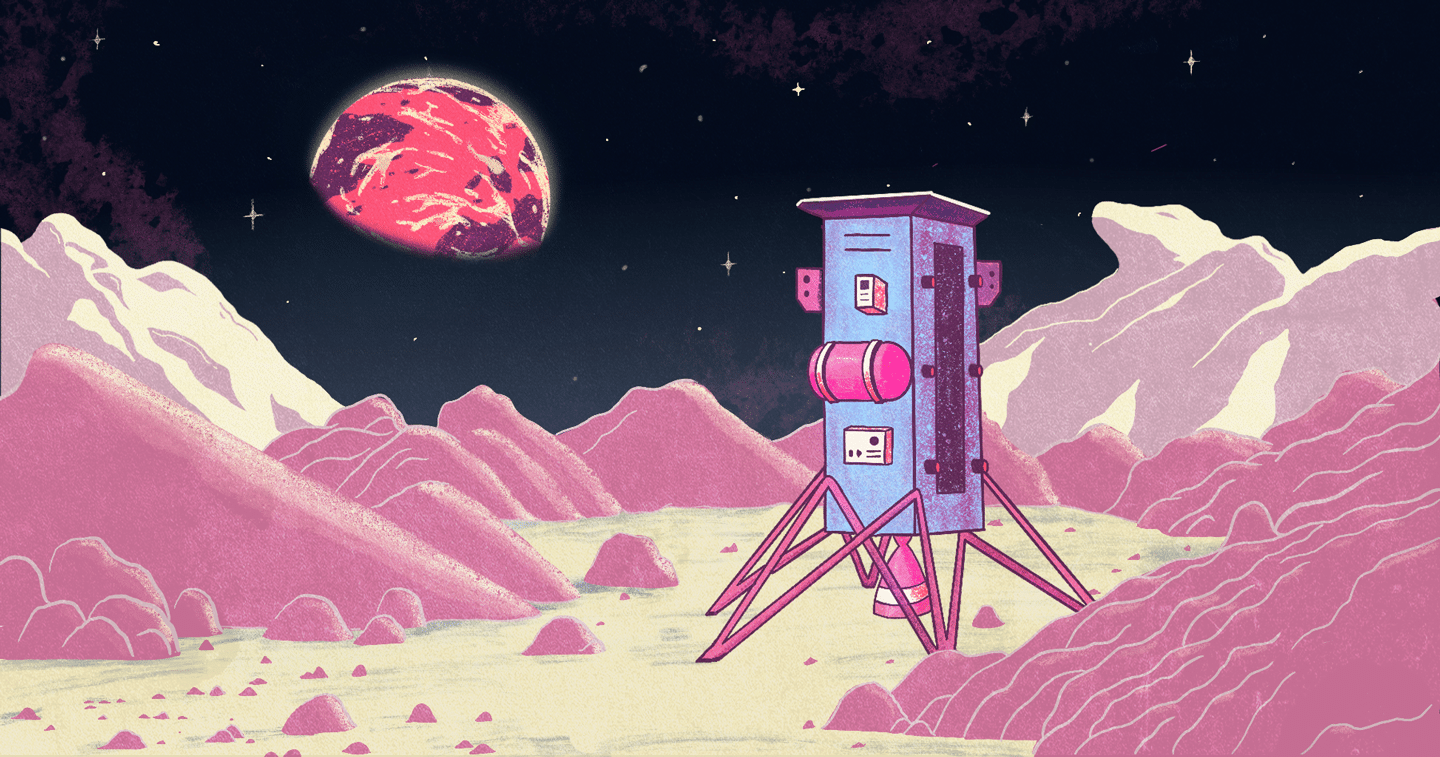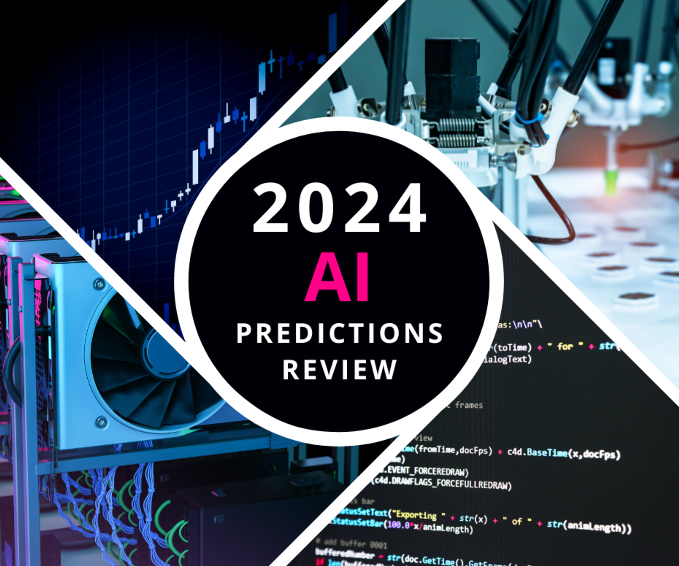Forecasting the near-term future presents its own set of challenges, but extending our foresight to a five-year horizon amplifies these difficulties. This week, we feature excerpts from Radical Partner Rob Toews’ latest article in Forbes as he explores the complexities of making predictions in such a rapidly evolving domain. The purpose of presenting these forward-looking perspectives is not only to predict the future, but to initiate dialogue and encourage a collective imagining of the unfolding landscape of artificial intelligence. All views expressed are those of Rob personally.
Nvidia’s market capitalization will be meaningfully lower than it is today. Intel’s will be meaningfully higher than it is today.
Nvidia’s position as the single dominant provider of chips for AI cannot and will not last.
What Nvidia has built is difficult, but not impossible, to replicate. A resurgent AMD is emerging as a credible alternative provider of advanced GPUs, with its cutting-edge new MI300 chip about to become widely available. The big tech companies—Amazon, Microsoft, Alphabet, Meta—are all investing heavily to develop their own AI chips in order to lessen their dependence on Nvidia.
Meanwhile: what is the one thing that sets Intel apart from virtually every other chip company in the world? It manufactures its own chips. Intel alone owns and operates its own chip fabrication facilities.
Put simply, America needs Intel. And that bodes well for Intel’s commercial prospects. Nvidia’s market cap today is $2.2 trillion. Intel’s, at $186 billion, is more than an order of magnitude smaller. We predict that this gap will have shrunk significantly by 2030.
We will interact with a wide range of AIs in our daily lives as naturally as we interact with other humans today.
The number of touchpoints that the average person actually has with cutting-edge AI systems today is limited: the occasional query to ChatGPT or Google Bard/Gemini, perhaps. By the year 2030, this will have changed in dramatic fashion. We will use AIs as our personal assistants, our tutors, our career counselors, our therapists, our accountants, our lawyers. They will be ubiquitous in our work lives: conducting analyses, writing code, building products, selling products, supporting customers, coordinating across teams and organizations, making strategic decisions.
As with any new technology, there will be an adoption curve. Some portions of the population will more readily adjust to interacting with their new AI peers; others will resist for longer. But make no mistake: this transition will be inevitable.
Over one hundred thousand humanoid robots will be deployed in the real world.
Today’s AI boom has unfolded almost entirely in the digital realm. There is a whole other domain that is waiting to be transformed by today’s cutting-edge AI: the physical world, the world of atoms.
Today’s robots have narrowly defined capabilities and limited intelligence. They are typically purpose-built for a particular task—say, moving boxes around a warehouse, or completing a specific step in a manufacturing process, or vacuuming a floor. This is going to change in the years ahead. Generative AI is going to conquer the world of atoms—and it will make everything that has happened to date in AI seem modest by comparison.
Dating back to the dawn of digital computing, a recurring theme in technology has been to make hardware platforms as general as possible and to preserve as much flexibility as possible for the software layer.
We will see this same shift play out in robotics over the coming years: away from specialized machines with narrowly defined use cases and toward a more general-purpose, flexible, adaptable, universal hardware platform.
“Agents” and “AGI” will be outdated terms that are no longer widely used.
Two of the hottest topics in AI today are agents and artificial general intelligence (AGI). Agents are AI systems that can complete loosely defined tasks: say, planning and booking your upcoming trip. AGI refers to an artificial intelligence system that meets or exceeds human capabilities on every dimension.
When people envision the state of AI in 2030, agents and/or AGI are often front and center. Yet we predict that these two terms won’t even be widely used by 2030. Why? Because they will cease to be relevant as independent concepts.
Let’s start with “agents”. By 2030, agentic behavior will have become a fundamental, essential element of any advanced AI system.
What about the term “AGI”? Artificial intelligence is fundamentally unlike human intelligence, a basic truth that people often fail to grasp.
Using human intelligence as the ultimate anchor and yardstick for the development of artificial intelligence fails to recognize the full range of powerful, profound, unexpected, societally beneficial, utterly non-human abilities that machine intelligence might be capable of.
By 2030, AI will be unfathomably more powerful than humans in ways that will transform our world. It will also continue to lag human capabilities in other ways. If an artificial intelligence can, say, understand and explain every detail of human biology down to the atomic level, who cares if it is “general” in the sense of matching human capabilities across the board?
The concept of artificial general intelligence is not particularly coherent. As AI races forward in the years ahead, the term will become increasingly unhelpful and irrelevant.
AI-driven job loss will be one of the most widely discussed political and social issues.
Concerns about technology-driven job loss are a familiar theme in modern society, dating back to the Industrial Revolution and the Luddites. The AI era is no exception.
Creative policy proposals like universal basic income will go from fringe theories to adopted legislation. There will be no easy solutions or clear-cut ethical choices. Political affiliations and social identities will increasingly be determined by one’s opinions on how society should navigate the spread of AI throughout the economy.
If you think the political moment in 2024 is tumultuous: buckle up.
Rob writes a regular column on artificial intelligence for Forbes. Read the article in full.
AI News This Week
-
Exclusive: Snowflake teams up with Reka to add multimodal LLMs to data cloud (VentureBeat)
Snowflake Data Cloud is expanding its capabilities through a partnership with AI startup and Radical Ventures portfolio company Reka, aiming to incorporate multimodal large language models (LLMs) into its platform. This collaboration, following Snowflake’s involvement in Reka’s $60 million funding round, promises to enable the creation of generative AI applications capable of processing text, images, and videos. Snowflake’s introduction of Reka’s advanced models, Flash and Core, into its Snowflake Cortex service, marks a significant step in its ongoing evolution. Cortex already offers enterprises tools for building AI-driven applications, and with the addition of Reka’s state-of-the-art models, users can expect to enhance their applications with capabilities ranging from video captioning to generating e-commerce product descriptions.
-
PocketHealth gears up to continue North American expansion, AI push (BetaKit)
Radical Ventures portfolio company PocketHealth has revolutionized access to diagnostic images for over 1.5 million patients across more than 650 North American hospitals and imaging centers, leveraging AI to empower patients and providers alike. Following a US$33 million Series B funding round, the company is enhancing its AI capabilities and expanding its presence in both Canada and the US while adding AI tools that enhance the patient experience and enable PocketHealth’s goal of becoming the trusted digital healthcare partner of patients and providers everywhere.
-
Welcome to a golden age for workers (The Economist)
Taking a different perspective on employment prospects in the AI era, this article from The Economist explores the emergence of a “golden age” for workers, a marked departure from the challenging conditions faced in the mid-2010s. Post the global financial crisis, high unemployment and stagnant wage growth plagued the labour markets of the OECD countries. However, as societies age, labour is becoming scarcer and better rewarded, especially manual work that is hard to replace with technology. This shift is also fuelled by significant government spending and artificial intelligence enhancing productivity, especially for less skilled workers. These trends are not only improving wage prospects but also transforming labour markets, making technology a catalyst for higher pay in some occupations.
-
New AI model can help soccer teams take the perfect corner (Wired)
DeepMind collaborated with Liverpool FC to launch an AI tool aimed at optimizing soccer strategies, particularly for corner kicks. This tool, which uses advanced geometric deep learning, has proven more effective than traditional analysis, offering precise recommendations that enhance both offensive and defensive plays. Its success has marked a significant step forward in integrating AI with real world sports strategy, providing coaches with actionable insights to refine their tactics and gain a competitive edge.
Radical Reads is edited by Ebin Tomy.





